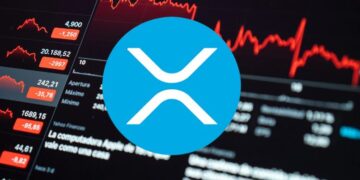- Justin Drake unveiled “lean Ethereum,” a 10-year vision to scale Ethereum to 10,000 TPS on Layer 1 and 1 million TPS on Layer 2 while maintaining full decentralization and 100% uptime.
- The plan includes bold upgrades like Beacon Chain 2.0, EVM 2.0 (possibly using RISC-V), and quantum-resistant cryptography using hash-native zk-VMs and hash-based signatures.
- Drake framed lean Ethereum as both technical and philosophical, embracing minimalism, modularity, and community diversity as Ethereum enters its second decade.
Ethereum just turned ten—and senior Ethereum Foundation researcher Justin Drake is already thinking about the next decade. In a detailed post shared Thursday, Drake rolled out his long-term vision for what he calls “lean Ethereum”—a minimalist but radically ambitious blueprint for scaling Ethereum while keeping it rock-solid, censorship-resistant, and future-proof.
The big idea? Crank Ethereum’s base layer throughput to 10,000 TPS (yep, that’s not a typo), scale Layer 2s to 1 million TPS, and do it all without compromising decentralization or uptime. “Ethereum must survive anything,” Drake wrote. “If the internet is up, Ethereum is up.”
What Exactly Is ‘Lean Ethereum’?
At its core, lean Ethereum is about taking the chain’s architecture and pushing it to the limit—clean, modular, and hardened against whatever the next 50+ years might throw at it. Drake’s goals are wild but technically grounded. He’s aiming for:
- 1 gigagas/second on Layer 1 (currently ~3.75M gas/sec today)
- 10,000 TPS on the base layer
- 1 teragas/second across Layer 2 networks
- 1 million TPS across rollups and subnets
To get there, Drake’s proposing a complete evolution of Ethereum’s foundational tech. Think:
- Beacon Chain 2.0 (a rebrand of his earlier Beam Chain idea) to upgrade consensus
- Post-quantum blobs 2.0 to future-proof the data layer
- EVM 2.0, possibly powered by the RISC-V instruction set, to juice execution performance
This isn’t just a vision—it’s practically a manifesto.
Quantum-Proofing, Minimalism & The Sushi Philosophy
Drake’s vision leans heavily into hash-based cryptography. No more relying on classical digital signatures. Instead, he imagines Ethereum running with hash-rooted commitments, hash-native zk-VMs, and post-quantum signature schemes—all of it aimed at withstanding even quantum-level threats without cluttering up the execution layer.
But beyond the code, lean Ethereum is also an aesthetic. “Minimalism. Modularity. Encapsulated complexity,” Drake writes. He compares the design approach to the elegance of sushi master Jiro Ono—”An art form. A craft. Think Jiro Dreams of Sushi.”
A Growing Ecosystem with Room for Divergence
Drake also acknowledged that Ethereum isn’t a monolith—and that’s part of the strength. “A healthy diversity of views across Protocol, the EF, and the broader Ethereum community is expected and welcome,” he said.
The Ethereum Foundation, now led by new co-directors Hsiao-Wei Wang and Tomasz Stanczak, has been evolving alongside the network. With Ethereum entering its second decade, this lean vision might serve as a rallying point—or just one of many threads in a very decentralized future.















